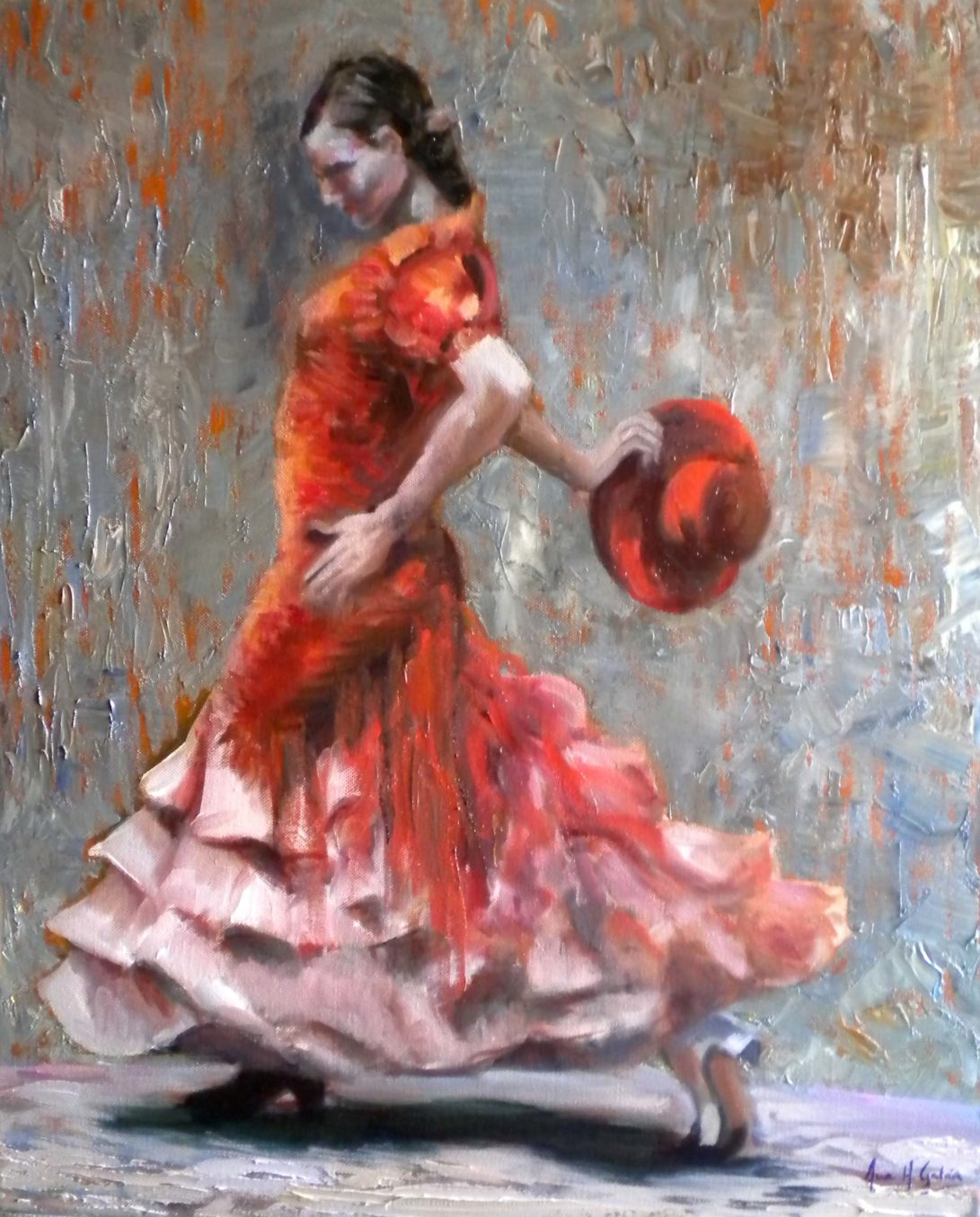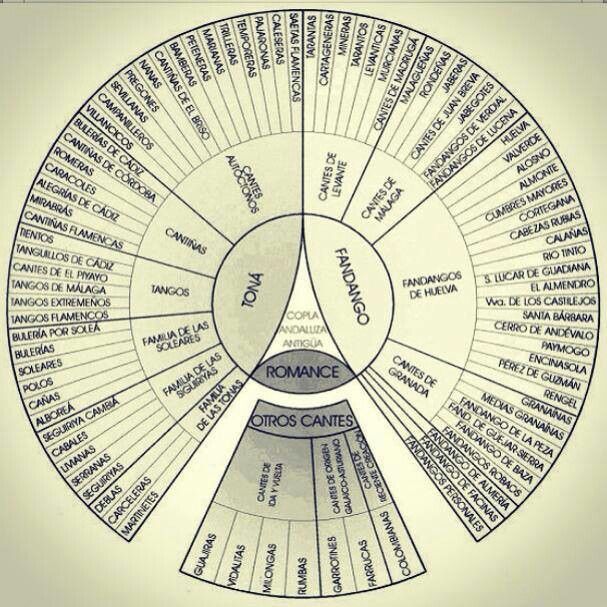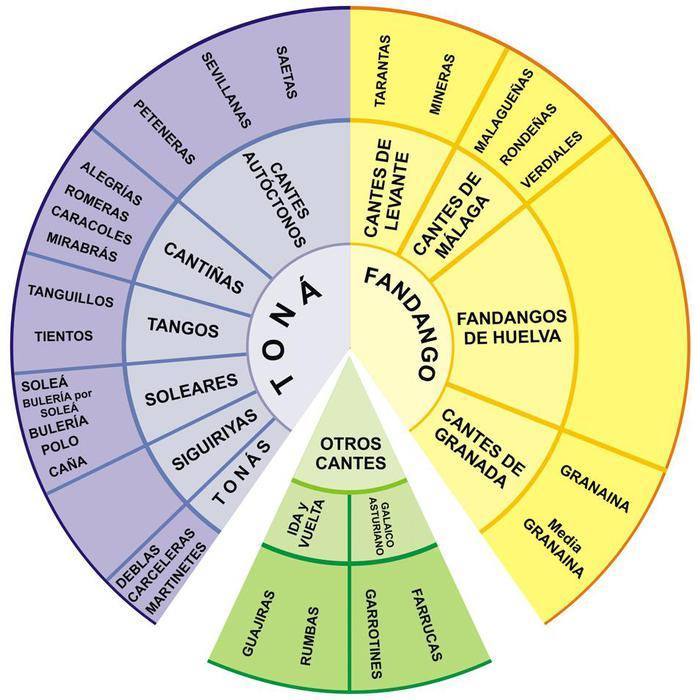flamenco
Local flamenco sounds
Local songs and dances, some of them with folkloric origin, that were mixed together with flamenco.

Trileras, Bamberas and Marianas
Trilleras
The Trilleras are a flamenco variety with a folkloric origin. There were songs about popular topics as rural jobs. There are similar to “nanas” which show their Castilian precedence. It is an ancient singing but its flamenco character appeared during the XIX century. The Trilleras were singed without guitar using only bells, remembering the bells used by beasts of draught in the threshing floors. It is original from the peasant of Castille and was Bernardo el de los Lobitos who gave them the flamenco nature of Andalusia.
Bambera
In a TV performance Rocío Jurado give us a delightful Bamberas. With ease she informed the viewers the origin of this sing: The name bamberas comes from bamba, swing. In Andalusia, on Sundays and holydays, boys and girls had the habit of going to the countryside. They hanged a rope in a tree and the girls swung in the rope, helped by the boys causing a courtship. Although Carlos Almendros does not hang them in his family tree, they have always been included in the flamenco world because of the strong position that achieved thanks to the flamenco singer La Niña de los Peines, singing them in the compass of soleares in a faster rhythm. The lively and sensual bamberas were choreographed by Cristina Hoyos to her show Al compás del tiempo, danced by the women Hiniesta Cortés, Carmen Lozano, Manuela Ríos or Susana Casas, with the collaboration of the guitarists José Luis Rodriguez, Manuel Pérez, and El Juani; singed by Rafael Utrera, David Lagos and José Anillo.
Marianas
Mariana is the name given in one of the lyrics. Gypsies say that they called Mariana to the trained animals that danced to the compass of the baker such as monkeys, goats, bears, etc. This sing was adapted by gypsies to the popular flamenco. This sing was revealed by El Niño de las Marianas, the artistic name of Luis López (Seville, 1889- Madrid 1963) father of the famous guitarist Luis Maravillas. Pastora Pavón, La Niña de los Peines, gave its gypsy nature. The master José Otero in his Treaty of Dances, edited in Seville in 1912 told us that the marianas were a modern and accepted dance so they succeeded in the beginning of the XX century. Otero said that the master Seguro put them in the dance and the first performer was La Argentinita.
The Trilleras are a flamenco variety with a folkloric origin. There were songs about popular topics as rural jobs. There are similar to “nanas” which show their Castilian precedence. It is an ancient singing but its flamenco character appeared during the XIX century. The Trilleras were singed without guitar using only bells, remembering the bells used by beasts of draught in the threshing floors. It is original from the peasant of Castille and was Bernardo el de los Lobitos who gave them the flamenco nature of Andalusia.
Bambera
In a TV performance Rocío Jurado give us a delightful Bamberas. With ease she informed the viewers the origin of this sing: The name bamberas comes from bamba, swing. In Andalusia, on Sundays and holydays, boys and girls had the habit of going to the countryside. They hanged a rope in a tree and the girls swung in the rope, helped by the boys causing a courtship. Although Carlos Almendros does not hang them in his family tree, they have always been included in the flamenco world because of the strong position that achieved thanks to the flamenco singer La Niña de los Peines, singing them in the compass of soleares in a faster rhythm. The lively and sensual bamberas were choreographed by Cristina Hoyos to her show Al compás del tiempo, danced by the women Hiniesta Cortés, Carmen Lozano, Manuela Ríos or Susana Casas, with the collaboration of the guitarists José Luis Rodriguez, Manuel Pérez, and El Juani; singed by Rafael Utrera, David Lagos and José Anillo.
Marianas
Mariana is the name given in one of the lyrics. Gypsies say that they called Mariana to the trained animals that danced to the compass of the baker such as monkeys, goats, bears, etc. This sing was adapted by gypsies to the popular flamenco. This sing was revealed by El Niño de las Marianas, the artistic name of Luis López (Seville, 1889- Madrid 1963) father of the famous guitarist Luis Maravillas. Pastora Pavón, La Niña de los Peines, gave its gypsy nature. The master José Otero in his Treaty of Dances, edited in Seville in 1912 told us that the marianas were a modern and accepted dance so they succeeded in the beginning of the XX century. Otero said that the master Seguro put them in the dance and the first performer was La Argentinita.


Petenera, Trileras y Bamberas
Campanilleras
The Andalusian Grand Encyclopedia tell us beautiful things such as: this campanilleros connected with the classic Christmas Carols were aflamencados by the Utrera nuns in the XIX century. That fact can be corroborated by those who have heard lively the nuns Carmelitas in the Misa de Gallo through the bars of the Concepción convent. The flamenco nuns are in heaven and belong to the campanilleros chorus of Manuel Torres that, according to the intellectuals, was the one in giving this folkloric sing a flamenco character. Later, La Niña de la Puebla popularized them, and even if this singer was excellent in any sing variety, especially in the fandangos malagueños, in every performance she pleased the audience with the campanilleros.
Petenera
It is a sing about sinister facts only performed by a few artists because it is said that it is a bad spell. However, we believe that La Petenera was a woman with a hard life but not superstitious. She idealized love and chose the freedom only death could give her. This style was notorious at the end of the XIX century in the enigmatic life of the singer and after her death; her lyrics were launched to every flamenco establishment. The character La Petenera has inspired several Spanish choreographers.
The Andalusian Grand Encyclopedia tell us beautiful things such as: this campanilleros connected with the classic Christmas Carols were aflamencados by the Utrera nuns in the XIX century. That fact can be corroborated by those who have heard lively the nuns Carmelitas in the Misa de Gallo through the bars of the Concepción convent. The flamenco nuns are in heaven and belong to the campanilleros chorus of Manuel Torres that, according to the intellectuals, was the one in giving this folkloric sing a flamenco character. Later, La Niña de la Puebla popularized them, and even if this singer was excellent in any sing variety, especially in the fandangos malagueños, in every performance she pleased the audience with the campanilleros.
Petenera
It is a sing about sinister facts only performed by a few artists because it is said that it is a bad spell. However, we believe that La Petenera was a woman with a hard life but not superstitious. She idealized love and chose the freedom only death could give her. This style was notorious at the end of the XIX century in the enigmatic life of the singer and after her death; her lyrics were launched to every flamenco establishment. The character La Petenera has inspired several Spanish choreographers.
Sevillana: Cántame. María del Monte.
Sevillanas
It is the sing and dance from Seville, the sevillanas come from the seguidillas from La Mancha and Castilla. Their joy was appreciated by the whole Andalusia and nowadays they are worldwide famous. In the XVIII century took place the boom of the bolero dance in Europe, the sevillanas were free from the seguidilla and joined the repertory of the bolero school. We conserve three sevillanas boleras that in order to be well interpreted they must be prepared in a school of dance. Nowadays, there are four types of sevillanas. It isn’t an easy dance as it seems, even if it feels like improvised and spontaneous it has structure and rules. Once learnt the dancer must forget the technique and feel free to show his own grace.
It is the sing and dance from Seville, the sevillanas come from the seguidillas from La Mancha and Castilla. Their joy was appreciated by the whole Andalusia and nowadays they are worldwide famous. In the XVIII century took place the boom of the bolero dance in Europe, the sevillanas were free from the seguidilla and joined the repertory of the bolero school. We conserve three sevillanas boleras that in order to be well interpreted they must be prepared in a school of dance. Nowadays, there are four types of sevillanas. It isn’t an easy dance as it seems, even if it feels like improvised and spontaneous it has structure and rules. Once learnt the dancer must forget the technique and feel free to show his own grace.
